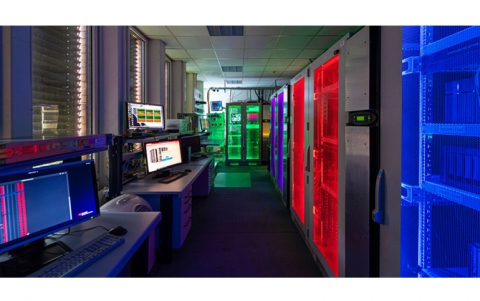
T-Ray Camera "Sees" Through Clothes
A new security imaging technology that can "see" explosives, liquids, narcotics, weapons, plastics and ceramics hidden under clothing from 25 metres will be unveiled at the Home Office Scientific Development Branch (HOSDB) Exhibition on 12 & 13 March 2008.
Developed by ThruVision Ltd, a spin out company of the Science and Technology Facility Council
Rutherford Appleton Laboratory (RAL), the T5000 passive terahertz imaging system is set to improve security at high profile sites and uniquely, at outdoor venues such as sporting arenas.
The T5000 can image both metallic and non-metallic threat objects hidden under clothing on still or moving subjects without revealing any body detail. It can be used both indoors and outdoors up to a distance of 25m. The camera is operating beyond the range of traditional X-ray scanning and metal detector systems.
ThruVision?s passive imaging technology stems from a collaborative European Space Agency (ESA) project which was based on original research carried out over many years by UK astronomers, including those at the STFC Rutherford Appleton Laboratory to study dying stars. The T5000 operates in the terahertz region of the electromagnetic spectrum ? frequently this region of the spectrum is referred to with terms such as Terahertz rays, or T-rays. T-rays are a form of low level energy naturally emitted from all materials, including rocks, plants, animals and people. They can pass through smoke, clouds and many solid materials like clothing, and in some cases, even walls. The T5000 passively collects these naturally occurring T-rays and processes them to form images that reveal concealed objects hidden under a person?s clothing without displaying physical body detail and without subjecting them to any of the radiation associated with traditional X-ray security screening.
Dr Liz Towns-Andrews, Director of Knowledge Exchange at STFC said: "Astronomers use T-ray cameras that can see through dust and clouds in space, revealing what lies beyond. ThruVision uses them to see weapons hidden by clothing. This is a first-class example of how fundamental scientific research can be applied to benefit the whole of society. Who would have imagined that research carried out by space scientists to study the stars could result in it being used to protect the public from terrorists and therefore save lives? The impact of this will be remarkable."
The T5000 can image both metallic and non-metallic threat objects hidden under clothing on still or moving subjects without revealing any body detail. It can be used both indoors and outdoors up to a distance of 25m. The camera is operating beyond the range of traditional X-ray scanning and metal detector systems.
ThruVision?s passive imaging technology stems from a collaborative European Space Agency (ESA) project which was based on original research carried out over many years by UK astronomers, including those at the STFC Rutherford Appleton Laboratory to study dying stars. The T5000 operates in the terahertz region of the electromagnetic spectrum ? frequently this region of the spectrum is referred to with terms such as Terahertz rays, or T-rays. T-rays are a form of low level energy naturally emitted from all materials, including rocks, plants, animals and people. They can pass through smoke, clouds and many solid materials like clothing, and in some cases, even walls. The T5000 passively collects these naturally occurring T-rays and processes them to form images that reveal concealed objects hidden under a person?s clothing without displaying physical body detail and without subjecting them to any of the radiation associated with traditional X-ray security screening.
Dr Liz Towns-Andrews, Director of Knowledge Exchange at STFC said: "Astronomers use T-ray cameras that can see through dust and clouds in space, revealing what lies beyond. ThruVision uses them to see weapons hidden by clothing. This is a first-class example of how fundamental scientific research can be applied to benefit the whole of society. Who would have imagined that research carried out by space scientists to study the stars could result in it being used to protect the public from terrorists and therefore save lives? The impact of this will be remarkable."












